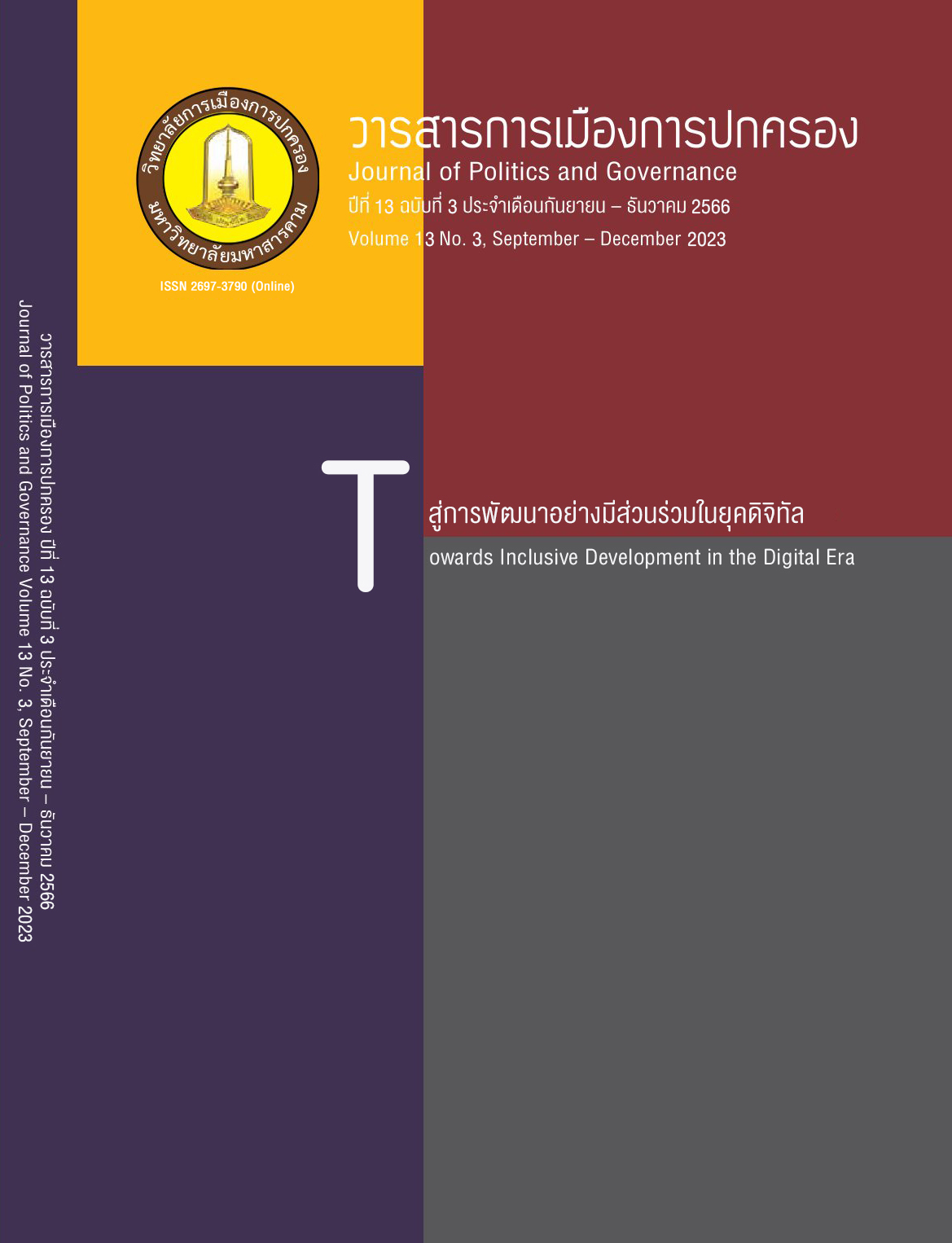Disability-poverty Cycle: The Public Policy Recommendations to Stop the Cycle
Main Article Content
Abstract
This article aims to explain the relationship between disability and poverty as twins that follow each other and propose some recommendations to stop the cycle. Usually, disability often leads to poverty, and likewise, poverty often leads to disability. This relationship becomes a continuous cycle called “the disability-poverty cycle” and makes it extremely difficult for people with disabilities to raise themselves out of poverty. When a person or a family member becomes disabled, it is likely to result in a decrease in household income. Likewise, when a person or a household is poor, it is more likely that a person or a member of that household will experience some type of disability. To stop the cycle of disability that leads to poverty, public policies should be implemented to remove barriers that obstruct the potential of people with disabilities. So, people with disabilities can live in society with dignity and have income to support themselves and their families. And to stop the cycle of poverty that leads to disability, public policies should be made to support decent living standards for the poor.
Article Details

This work is licensed under a Creative Commons Attribution-NonCommercial-NoDerivatives 4.0 International License.
References
คชรักษ์ แก้วสุราช. (2564). ถ้ามีรัฐสวัสดิการชีวิตคนพิการจะเป็นอย่างไร. https://thisable.me/content/2021/01/679
นณริฎ พิศลบุตร, วัชรินทร์ ตันติสันต์, ศุภชัย สมผล, และวิชญา พีชะพัฒน์. (2561). ก้าวแรกสู่การแก้ไขปัญหาคนจนให้หมดประเทศ. https://tdri.or.th/2018/01/disabled-state-welfare1/
ปณิศา เอมโอชา. (2565). คนพิการกับโอกาสในการมีงานทำกับคนปกติในไทย ในปี 2565. https://www.bbc.com/thai/thailand-62311330
พิชญา เตระจิตร. (2565). เพราะทุกคนมีความพิการอยู่ในตัว ไม่ใช่เรื่องของคนใดคนหนึ่ง: ดร.ทวี เชื้อสุวรรณทวี. https://thisable.me/content/2022/02/797
วันดี สันติวุฒิเมธี. (2561). ปลดล็อค “กรงขังความคิด” ปิดโรงงานขอทาน คุยกับต่อพงศ์ เสลานนท์. https://www.the101.world/tag/ต่อพงศ์-เสลานนท์/
สถาบันวิจัยระบบสาธารณสุข. (2555). สู่ความเป็นธรรมระบบบริการสุขภาพคนพิการ. https://kb.hsri.or.th/dspace/handle/11228/3923?show=full&locale-attribute=en
เอกชัย จั่นทอง. (2561). สังคมก้าวไม่ทันกฎหมายผู้พิการ “อย่าจำนนเสพความช่วยเหลือ”. https://www.posttoday.com/politic/report/548191
Bunnag, N. (2564). ปัจจัยสังคมกำหนดสุขภาพ.... . https://www.sdgmove.com/ 2021/04/08/social-determinants-of-health-and-health-equity/
Cheausuwantavee, T. & Suwansomrid, K. (2560). Disability law and policy in Thailand: An ideal and reality in the past decade. วารสารวิทยาลัยราชสุดา, 14, 87-103.
Duereh, A. (2565). “รายงานของ WHO เผยความเหลื่อมล้ำด้านสุขภาพ...”. https://www.sdgmove.com/2022/12/15/who-global-report-on-health-equity-disabilities/
Eide, A., Loeb, M., Nhiwatiwa, S., Munthali, A., Ngulube, T. & Van Rooy, G. (2011). Living conditions among people with disabilities in developing countries. In Eide, H. & Ingstad, B. (eds). Disability and Poverty: A Global Challenge. Bristol University Press and Policy Press.
Fjeld, H. & Sagli, G. (2011). Disability, poverty, and healthcare: Changes in the canji (‘disability’) policies in the history of the People’s Republic of China. In Eide, H. & Ingstad, B. (eds). Disability and Poverty: A Global Challenge. Bristol University Press and Policy Press.
Loyalha, P., Liu, L., Chen, G., & Zheng, X. (2014). The cost of disability in China. Demography, 51(1), 97-118.
Pinilla-Roncancio, M. (2015). Disability and poverty: Two related conditions, a review of the literature. Revista de la Facuitad de Medicina, 63(3), 113-123.
Singlor, T. (2564). 90% ของผู้พิการทางสายตาทั่วโลกกระจุกอยู่ในประเทศรายได้น้อย… . https://www.sdgmove.com/2021/09/01/extreme-poverty-and-blindness-cycle-broken-by-social-determinants-of-health-in-low-income-countries/
Swain, J., & French, S. (2013). International perspectives on disability. In Swain, J., French, S., Barnes, C. & Thomas, C. (eds). Disabling Barriers-Enabling Environments. SAGE Publications.
The Momentum Team. (2563). ทำไมเด็กพิการไทยถึงไม่ได้เรียน (ต่อ): ร่วมหาคำตอบและทางแก้ไขไปกับ ภรณี ภู่ประเสริฐ. https://themomentum.co/thaihealth-learnnaidee/
United Nations. (2019). Ending poverty and hunger for all persons with disabilities (Goals 1 and 2). https://www.un.org/development/desa/disabilities/wp-content/uploads/sites/15/2019/11/poverty-hunger-disability-brief2019.pdf
Wazakili, M., Chataika, T., Mji, G., Dube, K., & MacLachlan, M. (2011). Social inclusion of people with disabilities in poverty reduction policies and instruments: Initial impressions from Malawi and Uganda. In Eide, H. & Ingstad, B. (eds). Disability and Poverty: A Global Challenge. Bristol University Press and Policy Press.
Yongstar, S. (2565). ฟังสิ่งที่ผู้พิการถูกเลือกปฏิบัติจากที่ทำงาน. https://thematter. co/social/disabled-working/190873


